Developer documentation serves as a roadmap for new and seasoned software developers working on a project.
It includes everything from API documentation to internal coding standards, making it a critical resource for effective software development and maintenance.
Considering these benefits, the question of how to write developer documentation becomes even more crucial. Don’t worry; it’s not as complicated as it may seem. In this blog, we will learn how to create developer documentation and also explore the role of developer documentation tools for the same.
What Is Developer Documentation?
Developer documentation is an essential document that provides all the necessary details required for developers to effectively understand, use, and integrate a software product or service. It normally includes comprehensive guides, API references, code samples, installation procedures, and troubleshooting tips.
It aims to facilitate a deeper understanding of the software, detailing how it operates, how to set it up, and how to fix issues that may arise during its use.
For example, consider an API Documentation. It would thoroughly explain the application programming interface (API) offered by a service, detailing methods of sending requests, receiving responses, handling data, and managing errors.
It would include descriptions of various API endpoints, the expected request and response formats, authentication methods, and sample code in multiple programming languages to help developers see how to implement the API in real applications. It would also cover common errors and debugging tips to assist developers in resolving issues quickly.
| Related blog: How to Create Online Documentation? |
Why Is It Important to Create Developer Documentation?
Writing developer documentation is essential for both the usability and adoption of software products.
Let’s explore its many benefits:
- Enables Easier Onboarding: Developer documentation enables a roadmap for new developers, minimizing the time and effort required to understand the software’s architecture and functionality.
- Enhances Code Quality & Consistency: Well-documented code and clear development guidelines help maintain high standards and consistency across different project parts.
- Facilitates Developer Engagement: Extensive documentation makes it easier for developers to use and build upon a product, facilitating a more vibrant and active developer community.
- Reduces Support Costs: Detailed documentation can significantly reduce the number of support requests by providing developers with the resources to solve problems independently.
- Improves Product Reliability & Safety: In industries where reliability and regulatory compliance are critical, documentation ensures that all aspects of software development meet the required standards.
- Promotes Sustainable Development: With comprehensive documentation, new team members can easily pick up where others left off, which is essential for long-term project sustainability.
What Are the Steps to Create Developer Documentation?
Creating developer documentation requires a comprehensive approach that ensures the documentation is not only informative but also accessible and user-friendly.
Let’s explore the steps to create comprehensive developer documentation:
Write Understandable Code
Writing understandable code forms the backbone of effective developer documentation, requiring meaningful variable and function names that reflect their purposes without requiring additional comments to explain them.
This practice helps other developers understand the code at a glance, making it easier to follow the logic and functionality without digging into every detail. Also, well-structured code with proper commenting helps automatically generate documentation using tools like ProProfs Knowledge Base.
It’s crucial to comment consistently and clearly, especially when writing complex algorithms or business logic, to ensure that anyone reviewing the code understands the decisions that led to the current implementation.
Choose the Right Documentation Tool
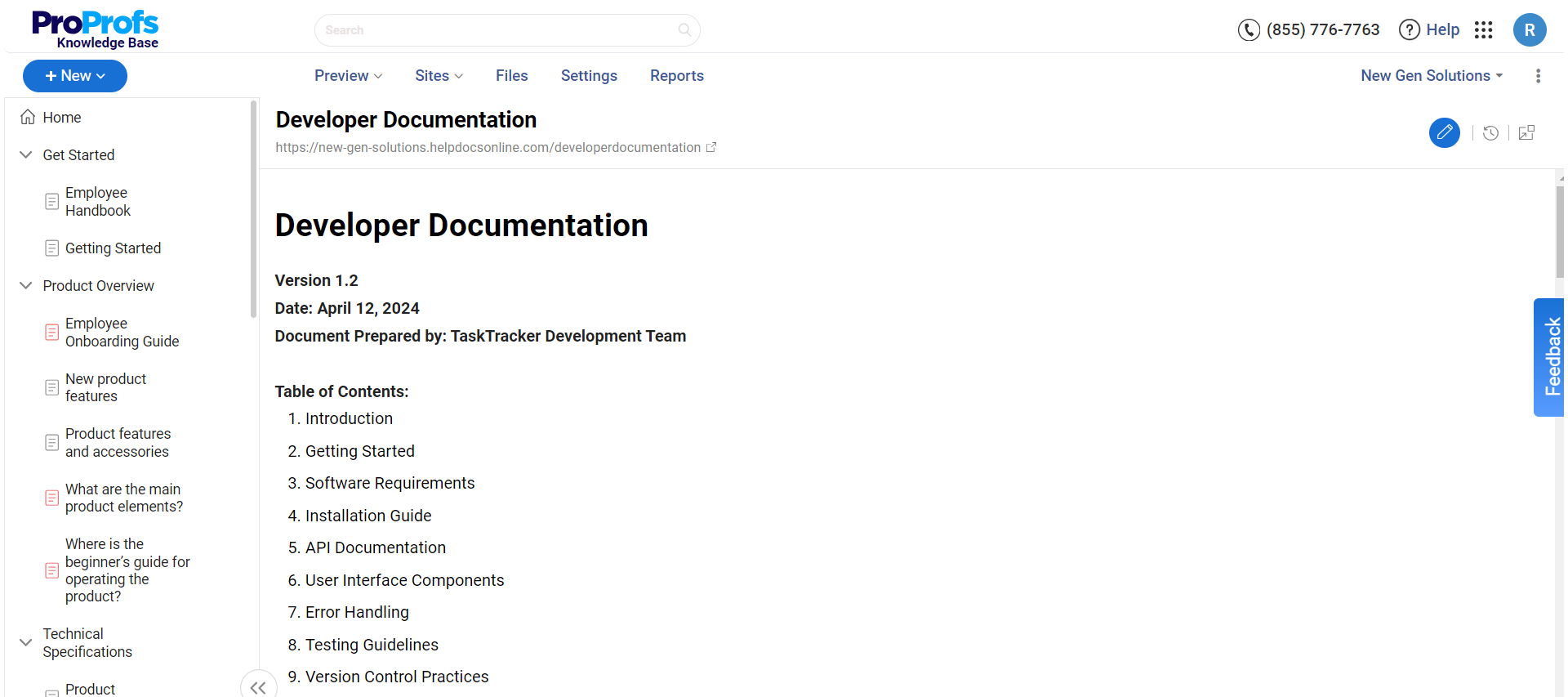
Choosing the right developer documentation software helps you maintain effective developer documentation. The selected tool should integrate seamlessly with your development environment and support the programming languages used in your projects.
To choose your ideal tool, consider factors like the tool’s support for collaborative editing, version control integrations, and output formats. Exporting documentation in multiple formats, such as PDF, HTML, or even as a website, can be beneficial for distributing the documentation to different audiences.
Create Comprehensive Test Case Documentation
Comprehensive test case documentation helps verify the software’s functionality and provides future developers and testers with a clear understanding of how the software should work.
Doing so effectively requires describing the test’s purpose, the steps to execute the test, the expected results, and any particular setup or configuration needed. It is also helpful to include information about why each test is essential and what aspects of the functionality it covers.
This ensures that the test cases are reusable and can be used as a learning tool for understanding the software. Additionally, well-documented test cases facilitate automation and help maintain consistency in testing as the software evolves.
Offer In-Depth Supplementary Documentation
In-depth supplementary documentation encompasses aspects of the project that are not directly related to the code but are essential for understanding the overall architecture and operation of the system.
This could have architectural overviews, design rationales, integration diagrams, API documentation, and user manuals. Detailed diagrams like UML (Unified Modeling Language) diagrams or ERDs (Entity-Relationship Diagrams) can help visualize complex systems and interactions.
Also, documenting the rationale behind major architectural decisions can provide insights into the system’s intended usage and capabilities, aiding developers in making informed decisions when modifying or enhancing the system.
Incorporate Visual Aids & Examples
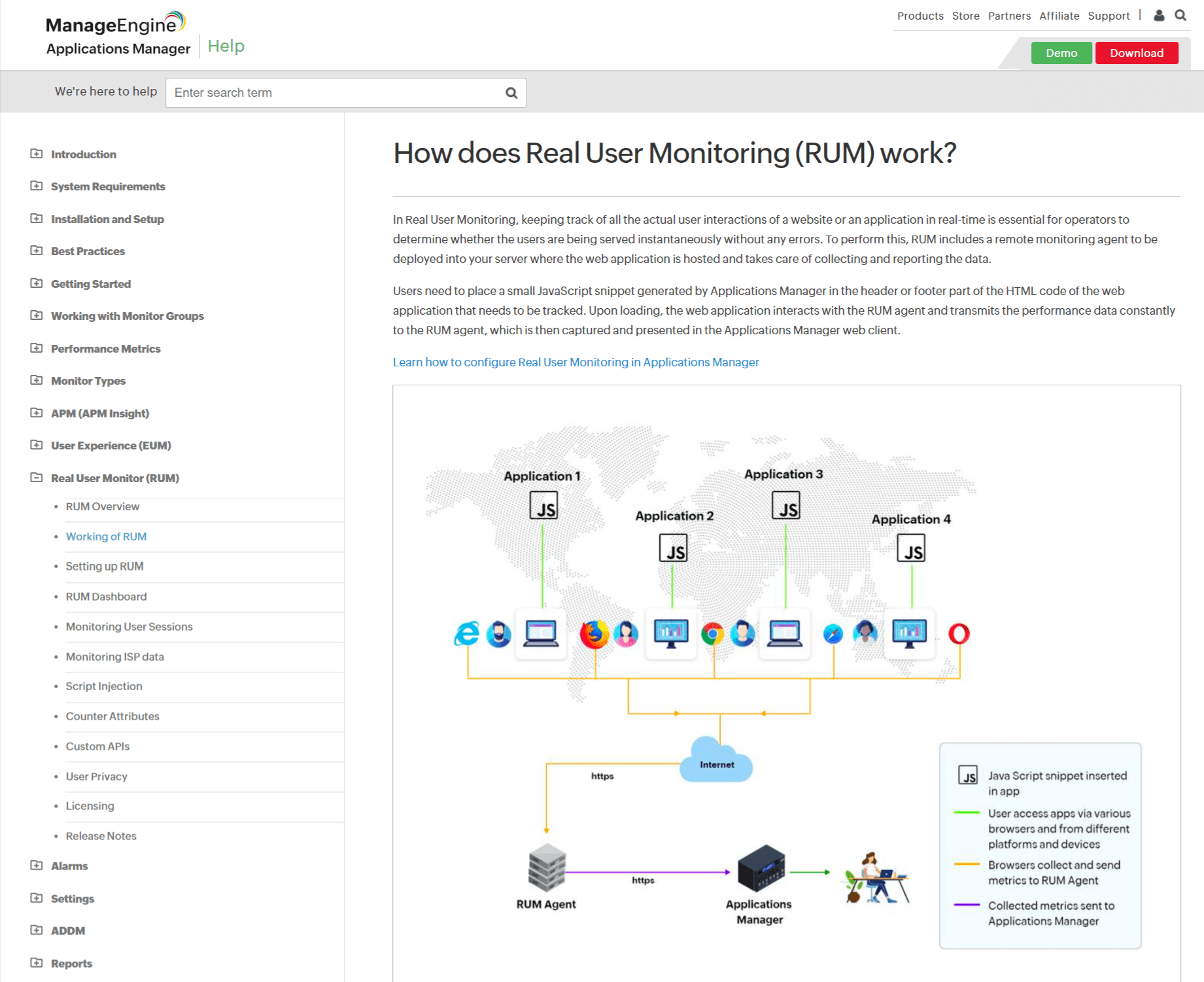
Visual elements like screenshots, videos, and interactive diagrams make technical documentation clearer and more engaging. Screenshots of software interfaces annotated with explanations can help illustrate how to navigate the system or demonstrate the result of a particular operation.
For API documentation, provide code samples in multiple languages to significantly enhance understanding by showing practical applications of the API calls. Interactive components like clickable diagrams or live code sandboxes encourage exploratory learning and allow developers to see the immediate effects of interacting with the code.
Including visual cues breaks the monotony of textual documentation and caters to different learning styles, making the documentation more effective for a wider audience.
Regularly Update & Revise Documentation
Establish a process for revising and expanding the documentation as the software evolves. Changes in the codebase should trigger corresponding updates in the documentation to avoid discrepancies that can lead to confusion or errors.
Regular audits of the documentation can help identify areas that are outdated or lacking in detail. Also, incorporating a system where developers are encouraged to update the documentation as part of the coding process can ensure that the documentation remains integrated with the development workflow and reflects the current state of the software.
Request & Incorporate Feedback
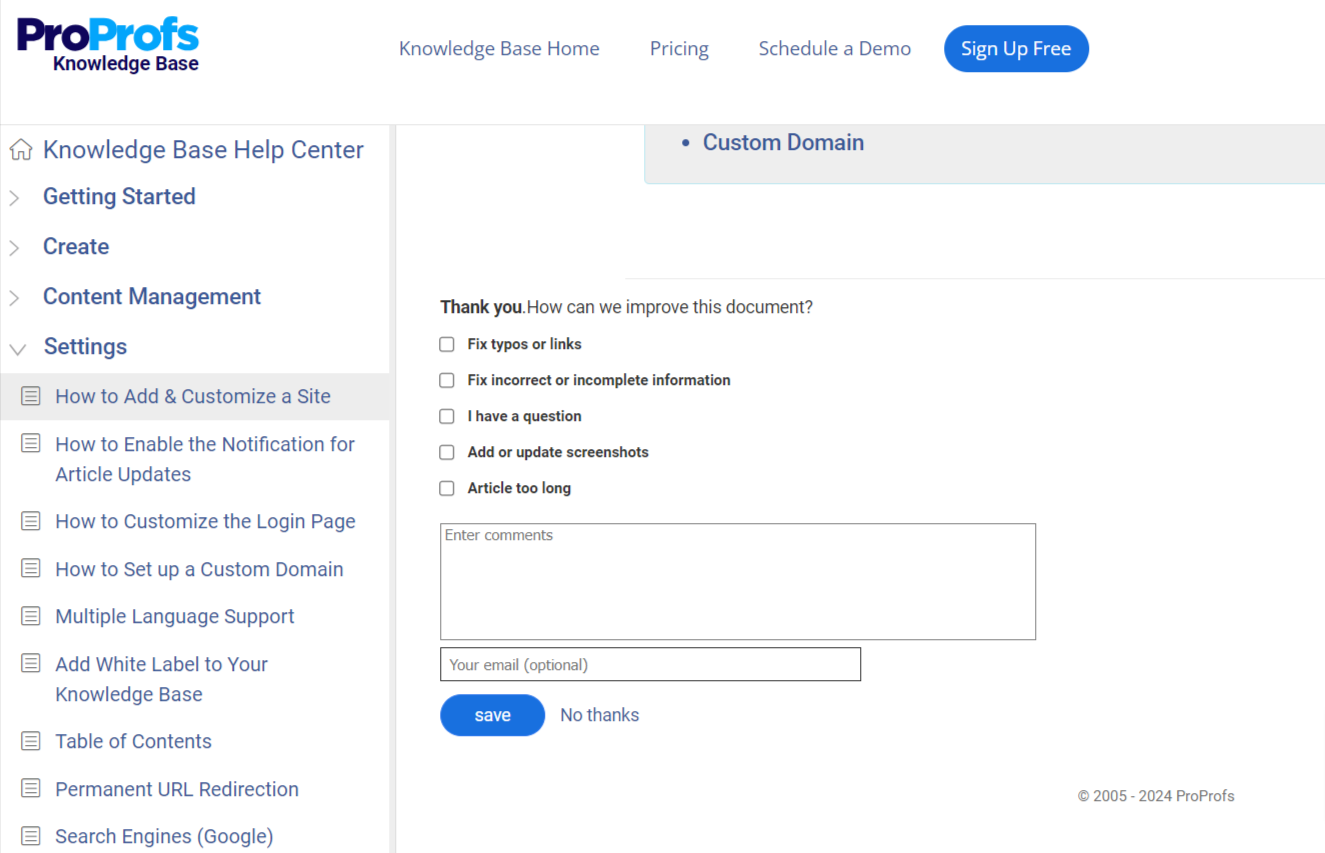
Collect feedback from users of the documentation, whether internal developers or external customers, as it is invaluable for improving the quality and effectiveness of the documentation.
Implementing methods for collecting feedback, like comment sections on documentation pages, direct links to issue trackers, or regular surveys, can provide insights into how the documentation is being used and its clarity.
Actively seeking and incorporating feedback helps refine the content and engages the community, making them feel involved in the development process. This collaborative approach can foster a more inclusive and proactive project environment.
What Is the Role of a Documentation Tool in Creating Developer Documentation?
Documentation tools facilitate the organization, creation, and management of comprehensive technical content crucial for internal developers and external users.
Let’s explore how they help:
Streamlined Documentation Creation
Documentation software enables a structured environment where developers can easily create, edit, and manage documents. These tools typically come with templates that help standardize the documentation format across an organization, ensuring consistency in the look and feel of all documents.
This standardization helps new developers and external users quickly find the information they need without navigating through unfamiliar layouts each time. Also, many documentation tools support rich text formatting, embedded images, videos, and diagrams, which are crucial for explaining complex information clearly and concisely.
Enhanced Collaboration
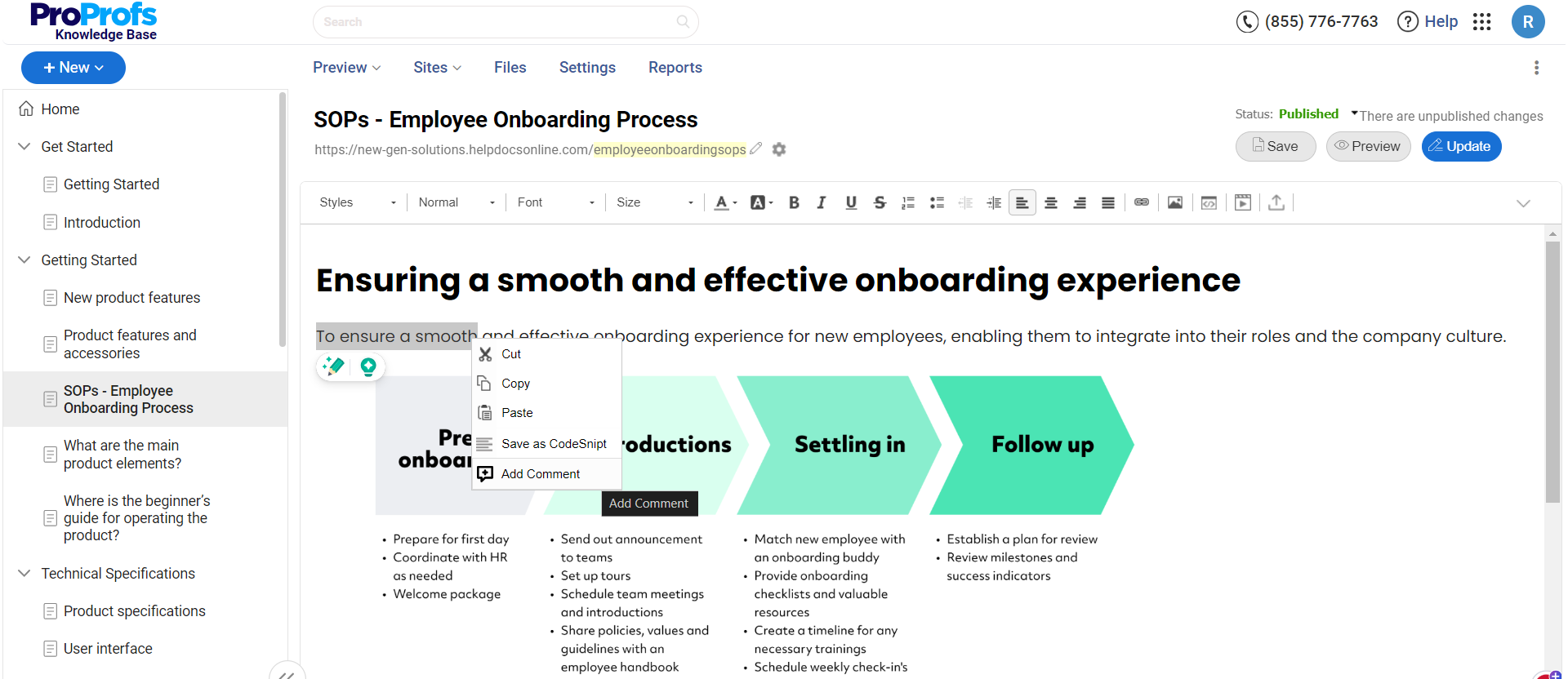
Robust documentation tools are built to support collaboration among multiple team members. They help various stakeholders, like developers, project managers, and quality assurance teams, to simultaneously contribute to and edit documentation.
Features like version control, edit tracking, and comments facilitate collaborative writing and revisions, ensuring that everyone can provide input and that changes are tracked over time.
This collaborative approach enhances the documentation quality by incorporating diverse insights and speeds up the documentation process as multiple contributors can work together in real time.
Automated Routine Tasks
Feature-rich documentation tools come equipped with features that automate routine tasks. For example, some tools automatically generate a table of contents, index pages, or API documentation from code comments.
Others can update cross-references or maintain a consistent style across documents by applying predefined style guides automatically. Automation helps minimize the manual effort involved in maintaining large documentation sets, ensuring that mundane tasks do not become a bottleneck in the documentation process.
Efficient Content Management
Documentation tools generally include robust content management systems (CMS) that help organize documents in a logical, searchable manner. These systems make it easy to categorize and retrieve documents as needed, especially in large projects with extensive documentation.
Features like tagging, advanced search capabilities, and customizable categorization help users find the information they need quickly and efficiently. Also, a good CMS can manage multiple versions of documents, allowing users to access previous versions when needed or see how documents have evolved.
Rich Integration With Development Environments
Many documentation platforms integrate seamlessly with software development environments and tools. This integration allows smoother workflows, where documentation can be updated alongside code changes directly within the development environment.
For example, API documentation tools can integrate with code repositories to automatically update documents whenever the source code changes. This ensures that documentation remains synchronized with the development progress, reducing discrepancies and the effort needed to keep documentation up to date.
Easy Publishing & Distributing Documentation
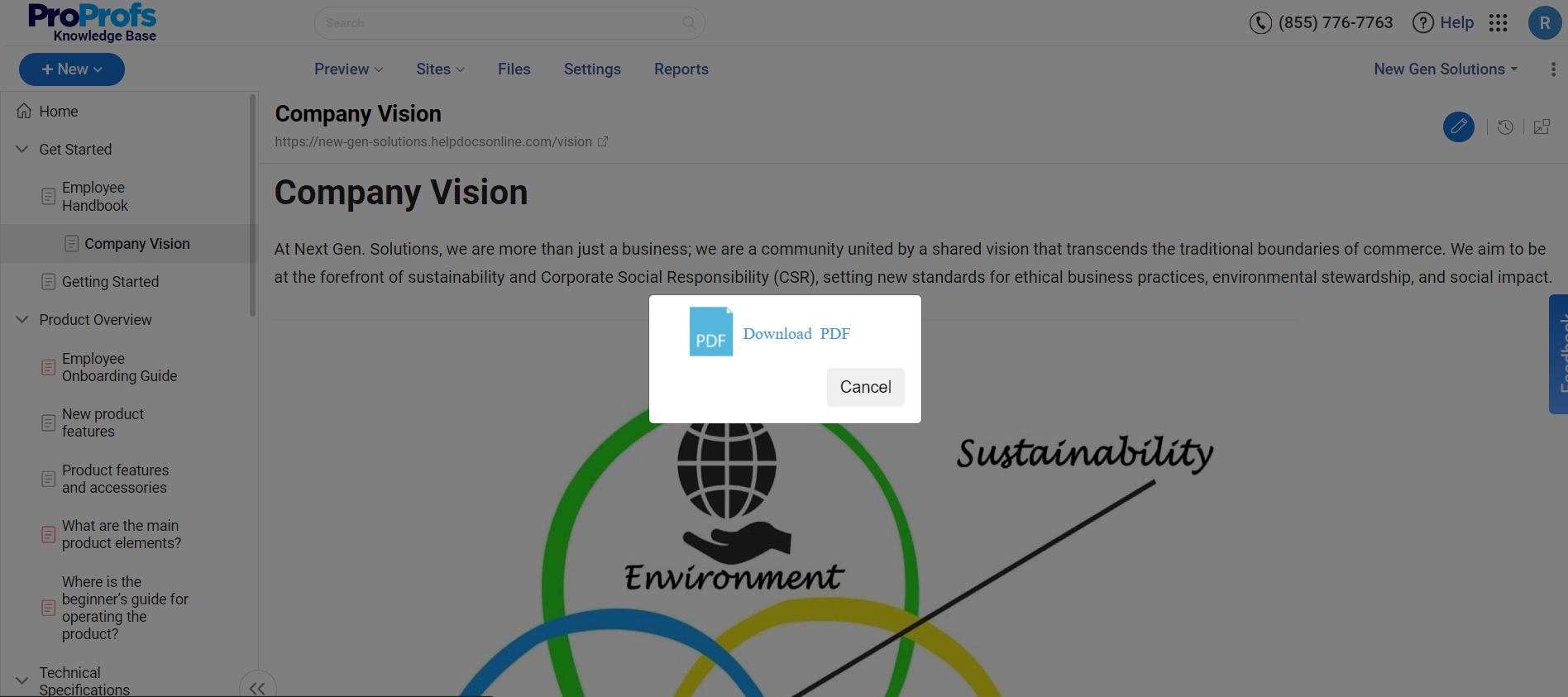
Documentation software allows publishing documents in various formats, like HTML for web access, PDF for downloads, or interactive web portals.
They also handle the distribution of documents, ensuring they are accessible from different devices and platforms, meet accessibility standards, and are secure from unauthorized access.
FREE. All Features. FOREVER!
Try our Forever FREE account with all premium features!
Why Are Clear Test Cases Important in Developer Documentation?
Clear test cases are essential for verifying and validating software functionality and ensuring that every aspect performs as expected under various conditions.
Let’s discuss why test cases are important in developer documentation:
Enables Accurate Functionality
Clear test cases enable detailed steps for testing specific functions or features within the software. By stating the expected outputs for given inputs, they help verify that the software behaves correctly in response to those inputs.
This helps catch bugs and errors early in the development cycle, saving significant time and resources compared to fixing issues post-deployment.
Eases Communication
Comprehensive test cases enhance communication among team members, including developers, testers, and project managers. They serve as a precise reference that everyone involved in the project can understand and follow, ensuring that all team members are on the same page regarding what needs to be tested and how.
This clarity is crucial in large or remote teams, where miscommunication can cause inconsistent testing and overlooked defects.
Facilitates Regression Testing
Making changes to the software always involves a risk of these changes inadvertently affecting other parts of the application.
Clear test cases explaining new and existing functionalities assist in thorough regression testing, ensuring the latest changes do not disrupt previously working features. This in-depth approach helps maintain stability and reliability in the software throughout its lifecycle.
Aids in Automated Testing
Simple and understandable test cases are easily adapted into automated tests, crucial for efficient testing in continuous integration/continuous deployment (CI/CD) environments.
Automation can significantly speed up the testing process, allowing for more frequent tests and reducing human error in executing repetitive test cases. Comprehensive, well-structured test cases make the transition from manual to automated testing smoother and more reliable.
Enhances Product Quality
By enabling a systematic way of testing the software, clear test cases ensure that the product meets the quality standards expected by users and stakeholders.
They help uncover functional errors, usability issues, performance limitations, and security vulnerabilities. They enable thorough testing, which directly contributes to a higher quality product, which enhances user satisfaction and trust in the software.
Improves Documentation Usability
Incorporating clear test cases in developer documentation makes it more valuable and actionable.
Testers and developers who may be new to the project can quickly understand how to execute tests and what results to expect. This ease of use enables adherence to testing protocols and ensures that testing is done systematically and not randomly.
Helps in Legal & Compliance Assurance
Clear test cases that align with regulatory standards become even more critical in regulated industries. They provide a documented trail of compliance testing that can be critical during audits.
This documentation helps prove that the software has been rigorously tested for safety, privacy, accessibility, and other legal requirements.
Why Is It Important to Include Screenshots in Developer Documentation?
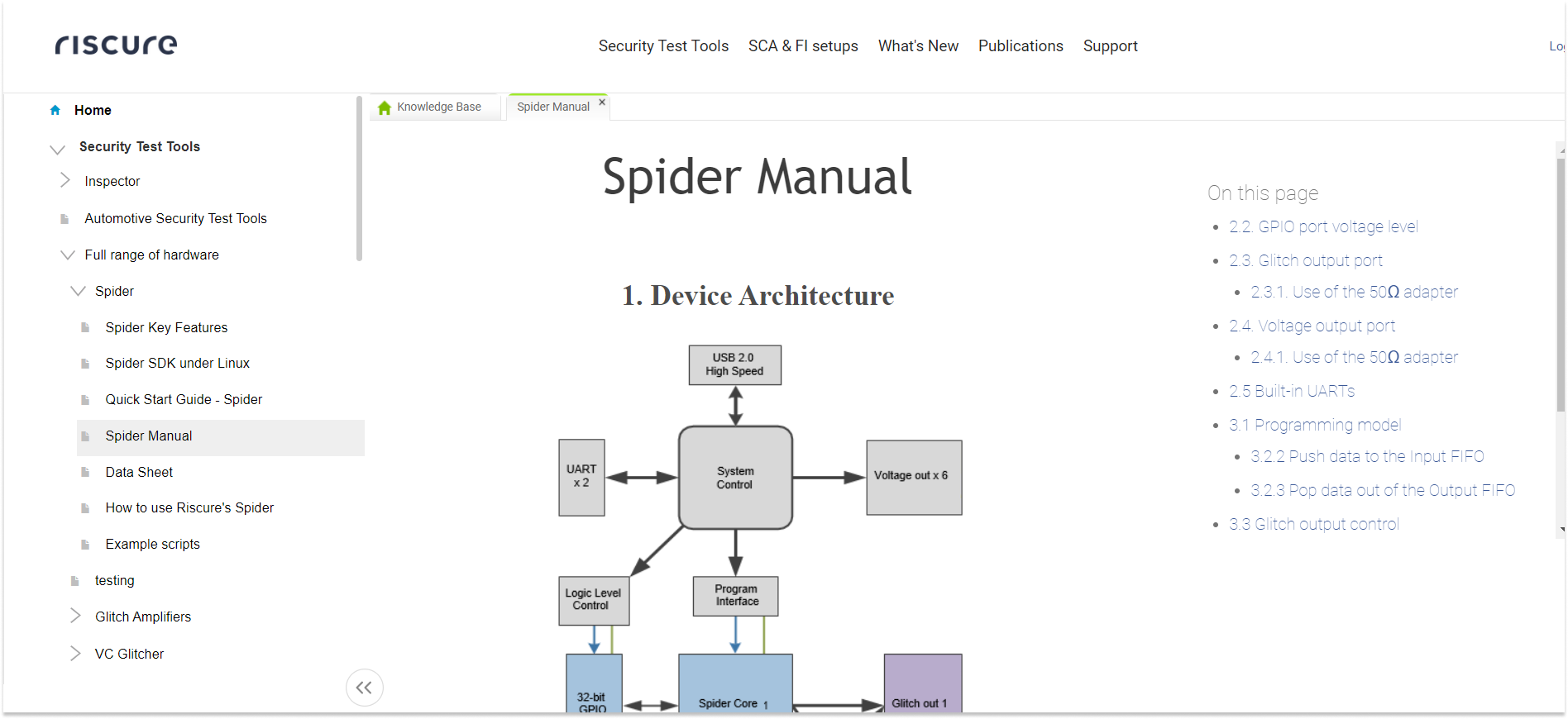
Adding screenshots in code documentation enhances understanding and usability, making complex information more accessible and easier to interpret. It helps in the following:
- Visual Clarity: Screenshots enable a clear and immediate understanding of the software interface, layout, or a specific feature, minimizing the ambiguity that might arise from text descriptions alone.
- Step-by-Step Guidance: In tutorials or setup instructions, screenshots show what users should see at each step, helping them follow the instructions correctly and know what to expect on their screens.
- Error Documentation: Adding screenshots of common errors and their solutions can help developers quickly identify and resolve issues without detailed troubleshooting.
- Enhanced Engagement: Visuals can make technical documentation more engaging and digestible, especially for visual learners, increasing the likelihood that the information will be retained.
- Validation of Results: Screenshots of expected outcomes after certain operations can serve as a validation check for developers, confirming that their actions have led to the correct result.
- Cross-Device Verification: Screenshots from different devices or operating environments can display how applications should appear across platforms, ensuring consistent user experiences.
- Feature Highlighting: Using annotated screenshots to highlight new features or changes in software updates can draw attention to critical functionalities and ensure they are properly utilized.
Create Comprehensive Developer Documentation for Enhanced Developer Engagement
Developer documentation is an indispensable asset that guides the development process and enhances the functionality and usability of software products.
Creating developer documentation involves a meticulous approach that considers the needs of its users, organizes information logically, and maintains accuracy and relevance through regular updates.
A robust tool like ProProfs Knowledge Base can significantly streamline the creation and management of developer documentation by supporting the integration of various media types, like images, videos, and screenshots, which are crucial for creating comprehensive and easy-to-scan documentation.
It also allows multiple users to collaborate on documents simultaneously, making it easier to gather inputs and revisions from different team members efficiently. With version control capabilities, every change made to a document is tracked and can be reverted if necessary, ensuring the documentation remains reliable and up-to-date.
 Tips
Tips
We’d love to hear your tips & suggestions on this article!
FREE. All Features. FOREVER!
Try our Forever FREE account with all premium features!
 We'd love your feedback!
We'd love your feedback! Thanks for your feedback!
Thanks for your feedback!







